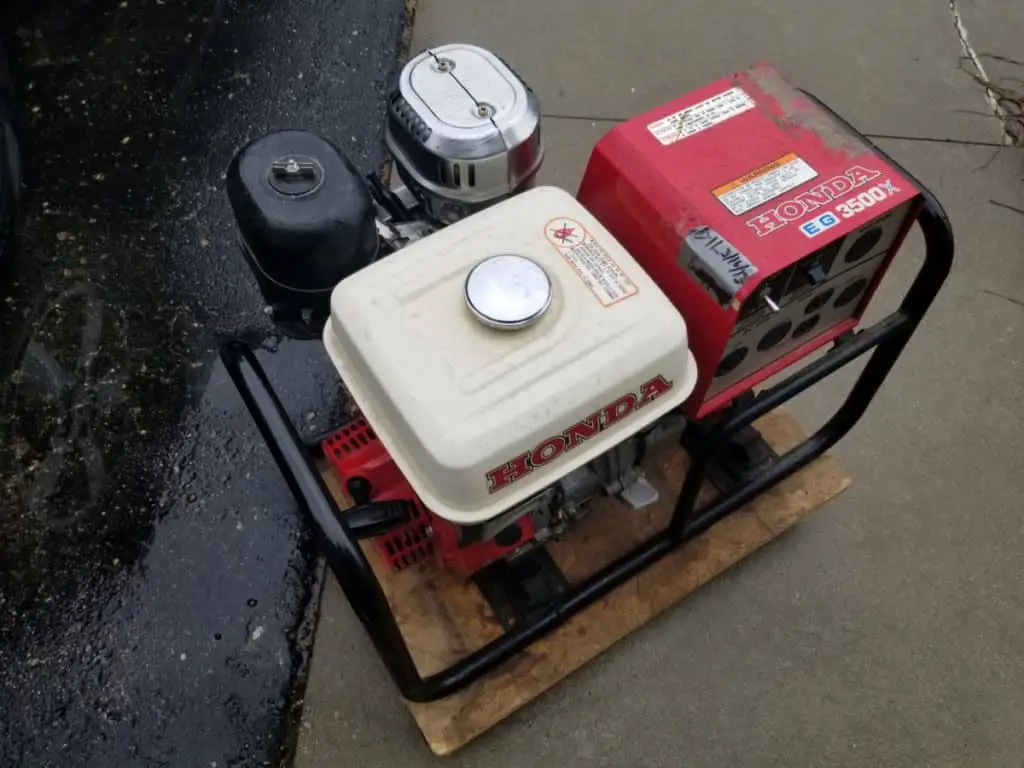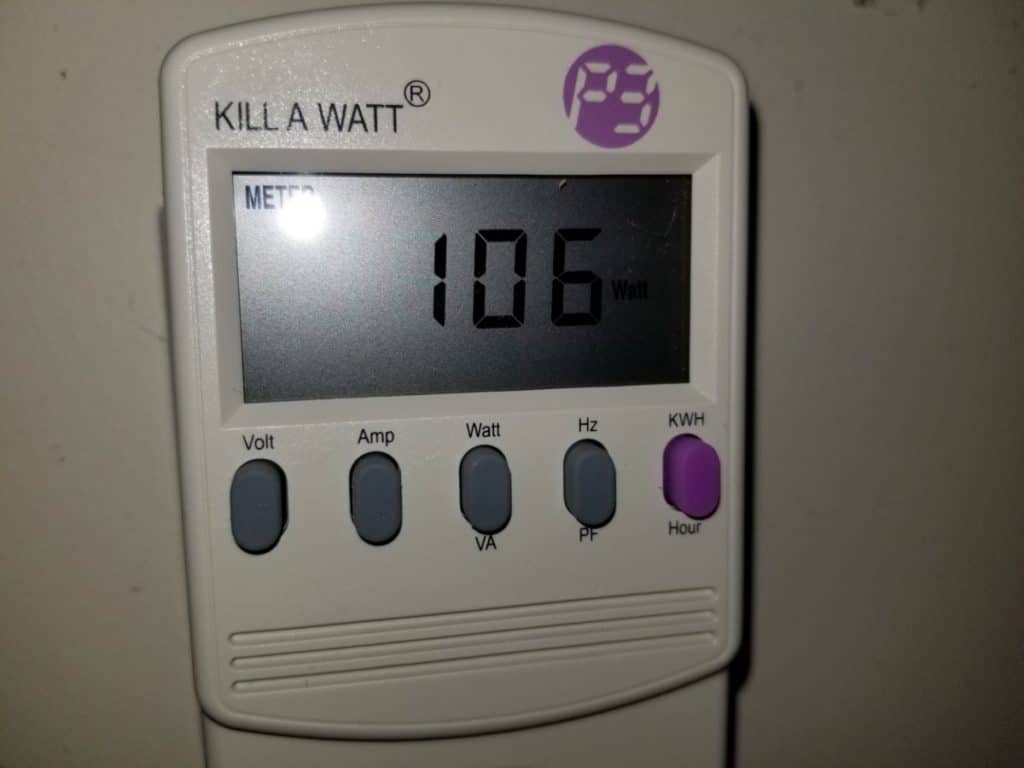Every single owner of a portable generator has wondered at some point whether or not it is safe to run it in the rain (or snow).
Will it be dangerous for the operator, damaging to the generator itself, or both?
Running a portable generator in the rain can damage the electronic components of the unit and is potentially dangerous to the user since water easily conducts electricity. Generator tents that cover the control panel but still allow airflow can be safely used in the rain.
In this article, I’m going to talk about why it’s not safe to run a generator in the rain if the generator is not covered, what you can do to safely use a generator in the rain, and what options you have if the weather is just too terrible to possibly run a generator outdoors even with a protective cover.
Safety Concerns with Running a Generator in the Rain
Electronics and water do not mix, and that is essentially what you’re doing if you put your generator outside with rain pouring down on it from the sky. It’s not only damaging to the electronic components and switches of the generator, but it is also a danger to you because we all know that water conducts electricity and with a generator producing 120 to 240-volts and a whole lot of amperage, it is more than capable of killing you.

Tangentially related to this is that people know that they shouldn’t run a generator in the rain so they back the generator up to their garage and simply run it from there with the door open. This is also dangerous as 25% of all carbon monoxide deaths caused by generators at home are the result of people running their generator in their garage.
I have a full article detailing the dangers of running a generator indoors here.
Air pressures, wind, temperatures, etc., all play a role in how the carbon monoxide will flow from the generator. It might come drafting in your house at a very high rate through the cracked door that you run your cord through, or up through the soffit into your attic, or absolutely nothing might happen.
It’s a crapshoot and I’m not willing to risk the lives of my family members to power a fridge and have some lights. If you’re going to do it, do it right and do it safely.
Also keep in mind that a generator produces 277 to 625 times the amount of carbon monoxide that a car produces according to the Consumer Product Safety Commission.
How to Safely Use a Generator in the Rain
The cool thing about mankind is that we always find ways to get around nature to do what we want to do and running a generator in the rain is now exception!
This rugged generator shelter seen on Amazon is an absolute game changer and a must-have for any generator owner who wants to safely be able to operate their generator in all conditions without having to take deadly risks like running a generator inside the garage. DO NOT RUN A GENERATOR IN THE GARAGE — EVEN WITH THE DOOR OPEN!
This easy to install tent goes up over your generator and keeps it safe from just about anything you can throw at it, including 70mph winds! Even if the rain is blowing in sideways the electrical panel will remain covered if properly installed.
So, even though it’s now safe to run a generator with this protective cover over it during the rain, you still need to keep the other safety rules in mind as you go to service your generator when adding gas or messing with the plugs.
I make sure to wear rubber-soled boots and under my rain jacket I carry a towel so that I can dry off my hands before touching any part of the generator.
No matter what you’re doing at this point, it’s best if you’re going to be messing with your generator to turn off the engine switch. That should be the first thing that you touch. With that being said, it is best to use only one hand to touch the generator switches so that you don’t create a bridge for an electrical current to flow from one hand through your body and your heart to the other hand as you become the completion of a circuit.
Once the engine switch is turned off it is best to wait about 10 minutes before you even bother refueling so that the exhaust has time to cool. Spilled gasoline can spontaneously combust if it comes in contact with your hot exhaust and the last thing you want during a power outage is to light yourself on fire.
Of course, always have your appliances turned off and unplugged from the extension cord that leads to the generator before you turn off the generator or start messing with the cords, otherwise you risk damaging your appliances.
What to do During Severe Weather
Even the cool products that we’ve come up with to run a generator in the rain will still have their limitations when mother nature rears its ugly head in the form of conditions that make it completely unsafe to even leave the house to set up your generator.
If that’s the case, then it is no longer safe to run a generator in any capacity since it cannot be safely operated indoors. In fact, it’s lethal.
For times like that we have the indoor generator. This is what the market calls them, but if you know anything about them you know that they are not a generator at all since they themselves do not “generate” or “produce” electricity. They store energy and release it on demand.
These come in various watt-hour sizes, but I like the 518wH model and the 240wH model the best and are excellent choices to power your devices and keep your some lights going. The links above will show you the excellent reviews on Amazon.
They are simply battery packs with a cover that looks generator-like in appearance and these battery packs have to be pre-charged by plugging them into a wall ahead of time. These are excellent products to have indoors to run at night so that you’re not creating any noise or indoors at any time of the day when the weather is too bad and you don’t want to risk going outside.
Since these are batteries (or a single battery) in a case they do not give off any harmful gasses or fumes that would hurt you or your family by operating them indoors and they are excellent for low wattage applications like some LED lightbulbs, charging your devices, running a laptop, or TV for a small amount of time.
The larger 518wH model has a surge rating of 1,000 watts, so if your fridge is very energy efficient, it may be enough to start the compressor. However, with only 515wH, you will burn that up in a hurry since your fridge will probably be pulling 250-300 watts per hour.
They might be out able to operate larger appliances but I wouldn’t recommend them for that purpose since once it’s drained it’s done until you can recharge it with your generator as the storm subsides or when the power comes back on. Always ration your power when the grid goes down.
To calculate how long either one of these indoor generators could run things, you need to add up the watts that your appliances use and then just do the math. If you’re unsure about what your appliances use, don’t go by what the plug says where it will often tell you the amount of volts, Hz, and watt/amps. The actual consumption is usually way off from this number.

Get yourself a Kill a Watt Meter like this one on Amazon and you can test and write down all of the particular device requirements that you have in your house and you’ll be able the plan accordingly.
For example, if you bought the 518wH indoor generator and wanted to power 3 x 9-watt LED light bulbs and charge your phone at 5-watts, you’d be looking at (9×3)+5 = 32w ==> 518wH / 32w = 16.19 Hours.

